Remove the radiator cap, wet its seal with engine coolant, then install it to pressure tester.
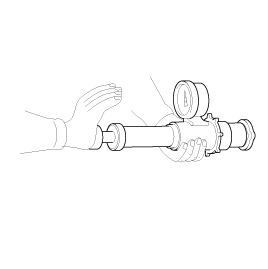
Remove the radiator cap, wet its seal with engine coolant, then install it to pressure tester.

Apply a pressure of 93 ~ 123kPa (0.95 ~ 1.25kgf/cm², 14 ~ 19psi).
Check for a drop in pressure.
If the pressure drops, replace the cap.
Wait until engine is cool, then carefully remove the radiator cap and fill the radiator with engine coolant, then install a pressure tester on it.
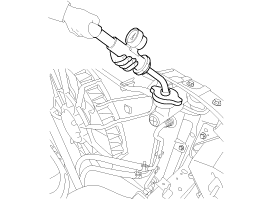
Apply a pressure of 93 ~ 123kPa (0.95 ~ 1.25kgf/cm², 14 ~ 19psi).
Inspect for engine coolant leaks and a drop in pressure.
If the pressure drops, check hoses, the radiator and the water pump for leakage. If there is no leakage, inspect the heater core, the cylinder block and the cylinder head.
Remove the tester and reinstall the radiator cap.
Check for engine oil in coolant and/or coolant in engine oil.
Disconnect the negative cable (A) from the battery.
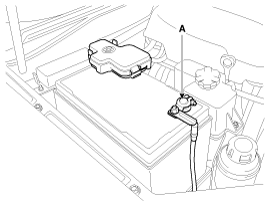
Remove the engine cover (A).
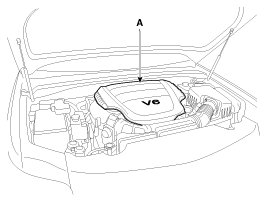
Remove the radiator grill upper guard (A).
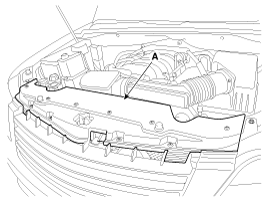
Loosen the drain plug and drain the engine coolant. Remove the radiator cap (A) to speed draining.
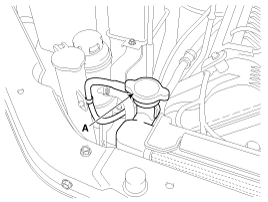
Disconnect the AFS connector (A) and breather hose (B) and then remove the air cleaner assembly (C).
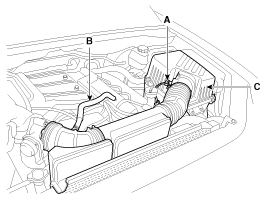
Disconnect the radiator upper hose (A) and lower hose (B).
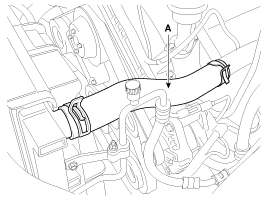
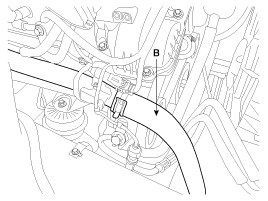
Disconnect the power steering fluid cooler pipe (A) from the cooling module by loosen the bolts.
Tightening torque :
8.8 ~ 13.7N.m (0.9 ~ 1.4kgf.m, 6.5 ~ 10.1lb-ft)
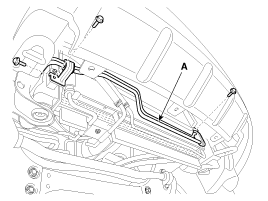
Remove the radiator.
Disconnect the fan motor connector (A).
Disconnect the ATF cooler hoses (B).
Remove the cooling module mounting nuts (C).
Tightening torque :
18.6 ~ 27.5N.m (1.9 ~ 2.8kgf.m, 13.7 ~ 20.3lb-ft)
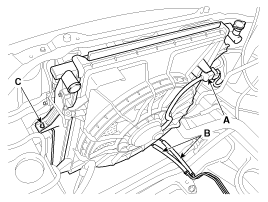
Remove the cooling module from the vehicle.
Separate the fan assembly and radiator assembly.
Installation is reverse order of removal.
Connect the fan motor connector.
Install the radiator upper hose & lower hose, and connect the ATF cooler hoses.
Fill the radiator with coolant and check for leaks.